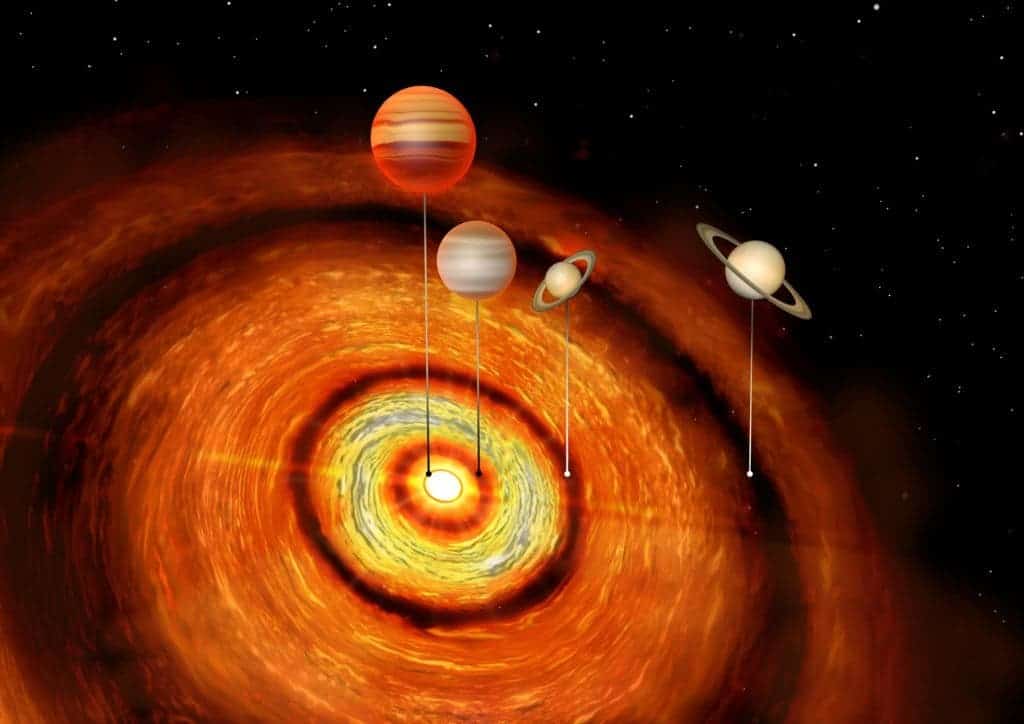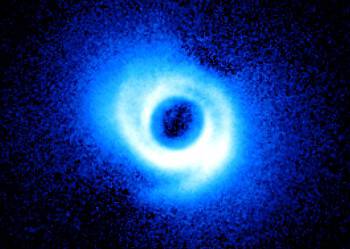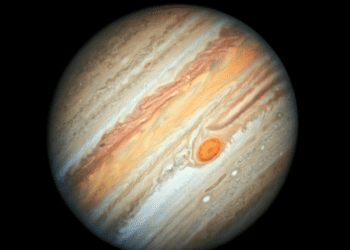
Astronomers have discovered a peculiar solar system some 500 light-years away from Earth that may force them to rethink how planets form. The star in question is only two million years old — a mere ‘toddler’ by astronomical standards — but despite its very young age, it’s orbited by four Jupiter and Saturn-sized planets.
A crowded baby star
Since the first confirmation of an exoplanet orbiting a sun-like star in 1995, and with only a few narrow slices of our Milky Way galaxy surveyed so far, astronomers have confirmed 2,327 exoplanets, with a further 2,244 awaiting confirmation.
A recent statistical estimate places, on average, at least one planet around every star in the galaxy. However, only 1% of the stars astronomers have surveyed so far host a hot Jupiter — a class of gas giant exoplanets that are inferred to be physically similar to Jupiter but that have a very short orbital period.
Most of the hot Jupiters currently identified orbit stars that are at least hundreds of millions of years old. This is why CI Tau, the young star recently studied by researchers at the University of Cambridge, is so interesting. What’s more, it has not one but four gas giants orbiting it.
The astronomers used Atacama Large Millimeter/submillimeter Array (ALMA) to identify the exoplanets. CI Tau is surrounded by a huge disc of dust and ice, known as a protoplanetary disc, which will seed planets, moons, asteroids, and other objects in its system. ALMA’s instruments were able to find distinct gaps in the disc which theoretical modeling showed would correspond to gas giant planets orbiting the star.
According to the new study published the Astrophysical Journal Letters, the four planets differ greatly in their orbit. The closest planet to CI Tau, a juvenile hot Jupiter, is within the equivalent orbit of Mercury.
The farthest orbits are at a distance three times greater than that of Neptune from the Sun. The two outer planets are about the mass of Saturn, while the two inner planets are around one and 10 times the mass of Jupiter respectively. Given that the outermost planet is more than a thousand times further from the star than the innermost one, the system has also set a new record for the most extreme range of orbits observed so far.
Scientists are not sure what to make of this anomalous system. Hot Jupiters have always puzzled astronomers because they are often thought to orbit too close to their parent stars to have formed in situ — instead, they might be captured rogue planets. But considering the age of CI Tau, the findings suggest that hot Jupiters could form within close proximity of a star.
“It is currently impossible to say whether the extreme planetary architecture seen in CI Tau is common in hot Jupiter systems because the way that these sibling planets were detected—through their effect on the protoplanetary disc – would not work in older systems which no longer have a protoplanetary disc,” said Professor Cathie Clarke from Cambridge’s Institute of Astronomy, the study’s first author.
In the future, the team of researchers plans on studying CI Tau at multiple wavelengths to learn more about the disc and its planets. For instance, they would like to see whether the outer planets played a role in driving their innermost sibling into such an ultra-close orbit. How the two outer planets formed in the first place is also a mystery.
“Planet formation models tend to focus on being able to make the types of planets that have been observed already, so new discoveries don’t necessarily fit the models,” said Clarke. “Saturn mass planets are supposed to form by first accumulating a solid core and then pulling in a layer of gas on top, but these processes are supposed to be very slow at large distances from the star. Most models will struggle to make planets of this mass at this distance.”






